| |
| | |
|
|
Ubiquitous Media
How to make media services omnipresent?
|
| | |
 Ubiquitous Computing Ubiquitous Computing
Ubiquitous Media
 Hybrary - Hybrid Library Hybrary - Hybrid Library
 Museum Technology Museum Technology
 Pervasive Gaming Pervasive Gaming
 Color Quantization Color Quantization
 Image Compression Image Compression
 Quality of Service Quality of Service
 Intelligent Internet Services Intelligent Internet Services
 Seamless Media Adaptation Seamless Media Adaptation
 Supervised Theses Supervised Theses

|
The term Ubiquitous Media was coined by Bill Buxton as the short form of Media in Ubiquitous Computing.
In the vision of Buxton, media becomes omnipresent and integrated into a ubiquitous computing environment.
The focus of my Ubiquitous Media research project is to explore possibilities for media services in
different application domains, including future cinema concepts, interactive and mobile television,
and realtime music distribution. Most of the projects (MobileCinema, Acousmetric Cinema, iTV) have
been developed as student projects within my courses of Interactive Television, Digital Video Production
and Multimedia Streaming at the ISNM since 2004. For most of the projects we received external funding
from the Unabhängige Landesmedienanstalt für Rundfunk und Neue Medien (ULR) in Schleswig-Holstein,
the regional broadcasting union.
The LiveMusicPortal project is a European funded PhD project.
Most of the projects have been published at International Conferences and Journals.
|
| | |

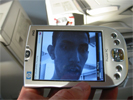







|
 MobileCinema MobileCinema
How to experience cinema at the film spot?
Mobile cinema, i.e. the user-specific and context-aware distribution of interactive content on
mobile devices, has great economic and artistic potential, as well as many interesting aesthetic,
social and technical challenges. Classical cinema content that is intended to be shown on a large
screen in a dark room is often not appropriate for small screens. Moreover, lack of immersion is an
important difference between traditional cinema and mobile media; as mobile users view content
while still perceiving the world around them. The integration of video on mobile devices, therefore,
has to be classified as augmented reality in contrast to the virtual reality experience of the cinema.
Mobile cinema offers new possibilities for enhancing social interactions in yet unknown
dimensions, since viewers can interact with people and physical spaces while sharing their
mobile media experience. The challenge, of course, is to perform the transition of
conventional broadcast schemes in television and interactive television (iTV) scenarios to
personalized mobile iTV. Location-based services and context-aware behavior offer many
forms of interesting and new user interactions. One of the most powerful is to use spatial
navigation as an interface to narrative structure and to combine spatial and media
experiences.
Many of these themes were explored within an ISNM “Digital Film and Video Production”
course at the ISNM in 2005, where several student teams created five film projects designed for context-aware
handheld computers. During the course, the film teams integrated navigation features and
story enhancements, based on the physical surroundings of the mobile viewer.
To alleviate the complexities of context detection and context interpretation, we simultaneously
developed a ubiquitous computing framework named.
This project was sponsored by Hewlett Packard.
 ALADIN.
ALADIN.
|
| | |

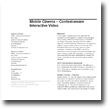
|
Details about the Mobile Cinema concept can be found in:
Andreas Schrader, Darren Carlson and Dominik Busch:
Mobile Cinema – Context-aware Interactive Video
International Conference on Human Factors in Computer Systems
( CHI'2006),
Workshop: Investigating new user experience challenges in iTV:
mobility & sociability, Montreal, Canada, April 22, 2006. CHI'2006),
Workshop: Investigating new user experience challenges in iTV:
mobility & sociability, Montreal, Canada, April 22, 2006.
Download paper at  CHI2006.
CHI2006.
|
| | |


|
Andreas Schrader, Darren Carlson and Dominik Busch
Modular Framework Support for Context-aware Mobile Cinema
 Springer Journal on Personal and Ubiquitous Computing
Springer Journal on Personal and Ubiquitous Computing
Special Issue on Implications of the socio-physical contexts when interacting with mobile media
Online: February 22, 2007, Print: Vol. 12, Number 4 / April 2008.
|
| | |


|
The film Autophobia developed by Ranjan Shetty and Wendy Ann Mansilla was re-filmed as "Solitude Dreams" using mobile
phone cameras in 2007, has won the
 Nokia Mobile Film Award 2007
and has been presented on the
Nokia Mobile Film Award 2007
and has been presented on the
 Nordic Film Festival in Lübeck in November 2007.
Nordic Film Festival in Lübeck in November 2007.
|
| | |

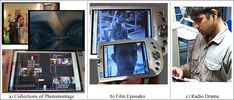

|
 Alternate Reality Cinema Alternate Reality Cinema
How to create immersive mobile cinema?
This project presents a mixed media approach for immersive narrative experiences
using a location-aware infrastructure. The system supports the presentation of multimodal sequences of
photomontages, films and radio on mobile devices. Navigation in the story is realised by tracking
the viewer’s location. The project has been presented publicly during ISNM Open House events,
and tested with students.
Through observations and gathered suggestions, the use of several media fragments in an interactive
narrative installation seems to effectively increase involvement of the viewers and to enhance the guidance
during the spatial navigation. The notion of Alternate Reality Cinema (ARC) introduced goes beyond traditional
immersive or mobile applications by hybrid integration of real-life and virtual elements. By blurring the border
between fiction and reality, new expressive ways for creative storytelling can emerge.
|
| | |


|
Details about the Acousmetric Cinema concept can be found in:
Wendy Ann Mansilla, Andreas Schrader and Ranjan Shetty:
ARC - Towards Alternative Reality Cinema
International Conference on Human Factors in Computer Systems
3rd International Conference on Technologies for Interactive Digital Storytelling and Entertainment
( TIDSE'2006),
Darmstadt, Germany, Dec. 4-6th, 2006.
Proceedings: S. Göbel, R. Malkewitz, and I. Iurgel (Eds.): TIDSE 2006,
Lecture Notes in Computer Science, vol. 4326, pp. 352-357, Springer Verlag, Berlin, Heidelberg, 2006. TIDSE'2006),
Darmstadt, Germany, Dec. 4-6th, 2006.
Proceedings: S. Göbel, R. Malkewitz, and I. Iurgel (Eds.): TIDSE 2006,
Lecture Notes in Computer Science, vol. 4326, pp. 352-357, Springer Verlag, Berlin, Heidelberg, 2006.
|
| | |

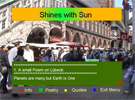
|
 Interactive Television Interactive Television
How to decide your own TV program?
Media convergence demands new methods for creating, distributing and perceiving digital video.
Especially with the digitalisation of television signals (DVB-T/S/C/H) new interactive services
can be realised for the end user (Multimedia Home Platform - MHP). With the availability of
high bandwidth Internet connections (xDSL), digital television signals can be transmitted over the
Internet (IPTV) and allows for realising completely new scenarios (e.g. VoD)
The interactive television project was organized in cooperation with the Multimedia Campus
in Kiel, Germany. Participants of the course "Interactive Television" had to create interactive
programs for an inhouse DVB-C television channel. The project realized the first time in a
German University the complete production chain from concept and filming, to interaction design
and MHP implementation to video coding and DBV-C caroussel playout. Topic of the five short
films: "Flaneur" - a silent watcher wanders through the streets of Lübeck and interprets the
social activities with his cameras. Interactive elements in the television signal can be used
to get more information about his thoughts and enhance the video with text, images and sound.
This project was sponsored by the ULR - Unabhängige Landesanstalt für Rundfunk und Neue Medien
(now  MA-HSH),
the regional office for radio broadcasting and new media of Schleswig-Holstein, Germany. MA-HSH),
the regional office for radio broadcasting and new media of Schleswig-Holstein, Germany.
|
| | |



|
 Internet Video Portal Internet Video Portal
How to integrate interactive video in the Internet?
The interactive video portal was realized as a class project within the course
"Selected Topics of Digital Video: Interactive Television" at the ISNM in 2006.
The participants analyzed a large list of interactive video services in the Internet.
Target of the project was to realize a new interactive video based section "Research & Projects"
at the ISNM. The projects have been ordered on a time line with mapping color scheme
for different categories. 18 projects have been identified and an XML-based description
(including Title, Category, Type, Participants, Descriptions, etc.) has been generated.
The portal shows short video clips for each project if an icon of the project is clicked.
Credits and text descriptions are available for each project and can be modified during
watching the interactive video clips. The project was realized using Adobe Flash.
This project was sponsored by the ULR - Unabhängige Landesanstalt für Rundfunk und Neue Medien
(now  MA-HSH),
the regional office for radio broadcasting and new media of Schleswig-Holstein, Germany. MA-HSH),
the regional office for radio broadcasting and new media of Schleswig-Holstein, Germany.
|
| | |


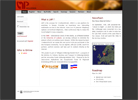




|
 LiveMusicPortal LiveMusicPortal
How to use the Internet as a very long audio cable?
LMP is the acronym for 'LiveMusicPortal', which is a new platform for musicians in Europe
( www.livemusicportal.eu).
Musicians can register, create a profile, search for partners, upload and share songs and exchange information
via blogs and fora. www.livemusicportal.eu).
Musicians can register, create a profile, search for partners, upload and share songs and exchange information
via blogs and fora.
But the core element of this new platform is a software called SoundJack developed at the ISNM.
This software allows for realtime transmission of high quality audio over the Internet by optimizing
audio packet handling in the network and sound cards. By downloading SoundJack free of charge from the
web portal, users can realize high-quality music jam sessions over the Internet. Distance up to several
hundred kilometers are possible.
The project has been demonstrated with live sessions including musicians all over Europe.
This project is part of "eRegion Schleswig-Holstein PLUS", a program of the Ministry for Science, Business and
Transport in Schleswig-Holstein and the Innovation Fonds Schleswig-Holstein (ISH) - financed by the EU
(Innovativen Maßnahmen des Europäischen Fonds für Regionale Entwicklung (EFRE) der Generaldirektion Europapolitik)
|
| | |


|
Details about the LiveMusicPortal concept can be found in:
Alexander Carôt:
Livemusik via Internet
 DFN Mitteilungen, Nr. 71,
Dezember 2006, S. 27-28. DFN Mitteilungen, Nr. 71,
Dezember 2006, S. 27-28.
Verein zur Förderung eines Deutschen Forschungsnetzes e.V.,
DFN-Verein, Stresemannstr. 78, 10963 Berlin
|
| | |


|
Alexander Carôt, Alain Renaud, Bruno Verbrugghe:
Network Music Performance (NMP) with Soundjack
Workshop Network Performance at the 6th International Conference on New Interfaces for Musical Expression
( nime'06),
Paris, France, June 4-8, 2006.
nime'06),
Paris, France, June 4-8, 2006.
|
| | |
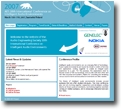

|
Alexander Carôt, Alain Renaud und Pedro Rebelo:
Networked Music Performance: State of the Art
30th International Conference on Intelligent Audio Systems
( AES’2007),
Saariselkä, Finnland, March 13-15, 2007.
AES’2007),
Saariselkä, Finnland, March 13-15, 2007.
|
| | |

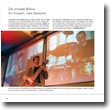
|
Die virtuelle Bühne: Ein Konzert, viele Spielorte
Leaflet "Netzwerke eRegion 2007" of the Ministry for Science, Business and Transport in Schleswig-Holstein, 2007.
( Netzwerke eRegion 2007).
Netzwerke eRegion 2007).
|
| | |


|
LiveMusicPortal (LMP)
Leaflet "60 Selected Regional Information Society Projects" of the Innovative Actions Network for the Information Society (IANIS)
of the European Union.
( IANIS).
IANIS).
|
| | |

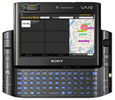
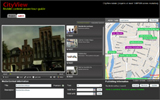

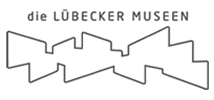

|
 CityView CityView
How to realize context-aware mobile media?
The CityView system helps tourists discover the cultural landmarks of the
historic city of Luebeck in Northern Germany. Unlike existing guide systems,
CityView automatically generates streaming context-aware tours based on shared
content from popular media Web-sites. Using the CityView mobile client, Luebeck
visitors can discover their current location and indicate their media filtering
preferences by selecting a content category and tour. As visitors move
throughout the city, the mobile client automatically identifies their physical
location on a dynamic map along with the location of nearby media elements.
Shared media content appears on the dynamic map located within the visitor’s
mobile device. Shared media can include video, audio and image content. As
visitors come near shared content the mobile client displays relevant media
elements in the visitor’s playlist. Visitors can then stream discovered media
content and discover new media elements by changing location or updating their
“area of interest” which appears as a red halo around the user’s icon.
Contextualized streaming media of Luebeck tourist help visitors decide what they
would like to visit next.
One of the main activities of Luebeck tourists is taking pictures or videos
using devices such as mobile phones or Micro PCs. After a day in the city,
tourists often upload and share their collected media content using popular
media sharing Web-sites. In CityView, we have developed a software architecture
which allows visitors to contextualize their shared content and allow CityView
mobile clients to discover and play it. Visitors contextualize media using the
CityView Media Contextualizer Web application, which aggregates the visitors’
shared media content and provides a unified interface for adding supplemental
context information. Context information can include a title, description,
validity dates, location and a tour filter. To help contextualize media, the
physical location of each video can be introduced by using a clickable map
interface. Published context information is stored within the CityView context
server where it is made available to CityView mobile clients. New visitors to
Luebeck will be automatically provided the new shared content – meaning that
there is always something new to discover.
This project was sponsored by the Medienstiftung Hamburg / Schleswig-Holstein
( MA-HSH)
and developed in cooperation with the Luebeck Cultural Foundation. MA-HSH)
and developed in cooperation with the Luebeck Cultural Foundation.
|
|
|
|